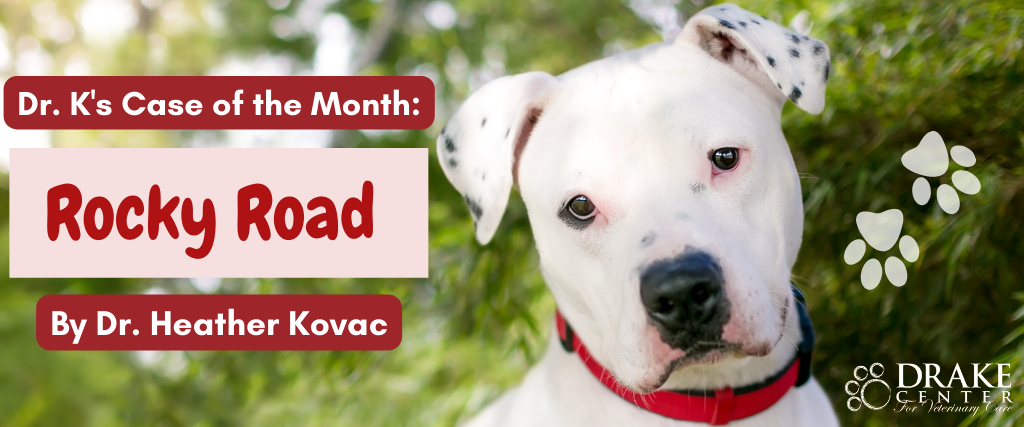The Patient
Rocky, a 2 year old male neutered mixed breed dog weighing 45 pounds, came to see me for limping on the left rear leg. His owner had noticed a subtle lameness on the leg for a few weeks; he would pick it up from time to time and then be okay. The night before the exam, the limping was severe and now he was not using the leg at all. He had been at the dog park the day before and was walking on 3 legs since then.
The Case
On examination, Rocky was holding the left rear leg up off the ground when standing and would only very gently touch his toes down when he tried to walk. He would completely hold it up when he was trotting or running. There were no visible exterior wounds and he was not licking the foot or leg at all. When I more closely examined the leg, there was some thickening around the knee and he did not like me to palpate the joint. I recommended taking some x-rays of his rear legs and pelvis. The x-rays revealed evidence of effusion, or fluid buildup, in the left stifle (knee) joint. There was no fracture but there was increased soft tissue density within the left stifle compared to the right. His hips and pelvis were normal. When we see this type of abnormality on an x-ray, it is almost always caused by a rupture of the cranial cruciate ligament. People and dogs have similar anatomy in the knee joint. In people, we call this ligament the anterior cruciate ligament, more commonly known as ACL. In dogs it is the CCL, only because they walk on all fours so we use the terms cranial and caudal instead of anterior and posterior. Dogs can also injure the meniscus in the knee joint. The CCL is responsible for stabilizing the knee and preventing the tibia (lower leg bone) from sliding forward in relation to the femur (thigh bone). We cannot see the ligament on an x-ray, only the evidence of swelling when the injury occurs. When dogs rupture the ligament, surgery is needed to fix the problem.
 |
 |
The Treatment Plan
I recommended a referral to a board certified orthopedic veterinary surgeon for a consultation and repair. When a medium to large breed dog ruptures the CCL, a surgery known as a tibial plateau leveling osteotomy (TPLO) is performed. This entails cutting the tibia and rotating it forward then placing a plate and screws to hold it in position. This prevents the lower leg from sliding forward post-op therefore mimicking the function of the CCL. In the meantime, I performed a routine blood panel on Rocky to make sure he was good to go for surgery and also to make sure he could tolerate the pain medications I wanted to prescribe. He was sent home with Rimadyl, which is a non-steroidal anti-inflammatory drug (NSAID), glucosamine/chondroitin chews for joint health, and he was instructed to stay quiet and restrict exercise until the surgery. At the time of the surgery, the surgeon confirmed complete rupture of the CCL in Rocky's knee but thankfully the meniscus was intact and normal. A TPLO was performed without complication. He spent one night in the hospital for monitoring and pain control. He was sent home the following day with instructions for at home care and passive range of motion exercises. He was scheduled for a recheck at 4 and 8 weeks.
The Outcome
Rocky did very well after his surgery and was using the leg well within 1 week. The 8 week post-op recheck confirmed normal healing of the surgery site. Once a dog ruptures his CCL, there is a high chance he will rupture the ligament in the other knee in a few years. This is because there is a genetic component to this disease so it can occur bilaterally. This is considered a sports injury so it is seen more commonly in active large breed dogs but I do see it in small dogs from time to time.
If your pet is limping, please call us at (760) 753-9393 to make an appointment with your veterinarian right away.
The Drake Center for Veterinary Care is an AAHA-accredited animal hospital located in Encinitas, CA. The Drake Center loves being a source of information for all pet owners across the country however if you have any questions regarding pet care and do not live in Encinitas, CA or surrounding cities, we encourage you to contact your local veterinarian.

